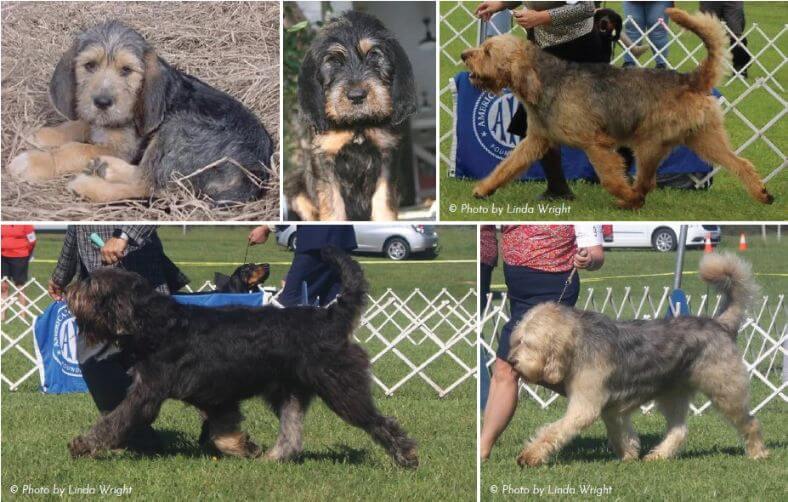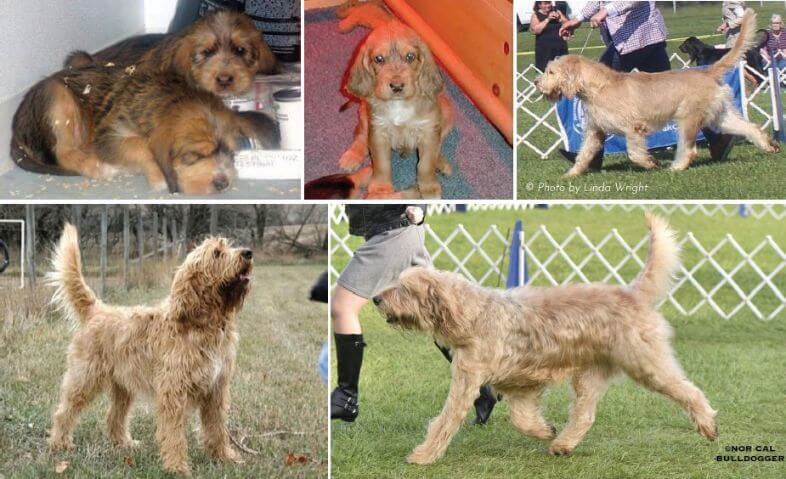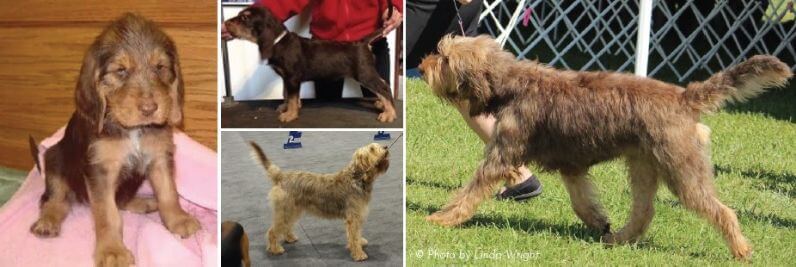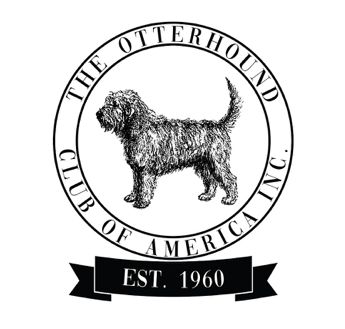Many judges have asked during our breed seminars about acceptable colors for the Otterhound. Here is the answer and some examples of the combinations through pictures. Some of these photos were taken at the 2021 OHCA National Specialty in Ohio, also showing the Otterhound’s beautiful reach and drive.
[wonderplugin_3dcarousel id=30]
Any color or combination is acceptable. There should be no discrimination on the basis of color.
“Any color or combination is acceptable. There should be no discrimination on the basis of color. The nose should be dark and fully pigmented, black, liver, or slate, depending on the color of the hound. Eye rim pigment should match the nose.”
All Otterhounds have at least two colors in their coat. Most Otterhounds are varying degrees of black and tan. They are usually born dark-coated and then continue to “grizzle out” through the years. Any hound color is acceptable, including grizzle, red, liver, blue, tan, tri-color (white with black and tan), and wheaten (light tan).
Markings are badger pie, black, tan, grizzle, liver, white, lemon, silver, tan and white, and white and tan. Although eye rims and noses are usually black, they match the color of the hound. The color of an Otterhound at birth, or even as a young dog, is not necessarily predictable as to how it will appear as a mature adult.
Otterhounds have a shaggy, coarse coat with length anywhere between 2-4 inches. Otterhounds can come in many color combinations, and the most common color for an Otterhound is black and tan. Otterhound colors include black and tan (can be a light gray and blonde with a “saddle”), wheaten/blonde, red grizzle, liver and tan (can vary from medium-dark brown to very light), black (or almost black with lighter markings on the head and feet), and tri- or parti-color (white or off-white with patches that may be very faint). Otterhounds change their color more than most any other breed,as you will see on these pages.
Picture examples of Otterhound coloring for puppies and adults:
Black and Tan Puppies and Adults

Typically, a dark color will make up the majority of their body. The tan side, however, will show up on their face, abdomen, tail, and paws. Otterhounds are most frequently found in black and tan.
Wheaten Otterhound Puppies and Adults

They’ll have light-colored, brownish or blonde fur. They may occasionally be completely wheaten or blonde with darker streaks. On their paws, cheeks, belly, and tail, certain dogs will have brownish fur in contrast to others with light streaks. Some may even combine the two colors, with one color predominating.
Tri- or Parti-Color White or Off-White with Patches of Liver, Tan and Black, Otterhound Puppies and Adults

Liver and Tan Otterhound Puppies and Adults

Usually, one color dominates over the other. The Otterhound’s colors will change and become more dispersed as it grows older. Some Liver and Tan Otterhounds remain dark and others are as light as wheatens. They will have a liver nose.













